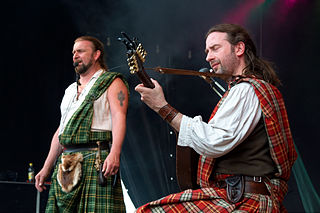
Celtic music is a broad grouping of music genres that evolved out of the folk music traditions of the Celtic people of Northwestern Europe. It refers to both orally-transmitted traditional music and recorded music and the styles vary considerably to include everything from traditional music to a wide range of hybrids.
Since the early 1970s, Brittany has experienced a tremendous revival of its folk music. Along with flourishing traditional forms such as the bombard-biniou pair and fest-noz ensembles incorporating other additional instruments, it has also branched out into numerous subgenres.

Manau is a Breton hip hop band formed in 1998, known for their fusing of traditional Celtic melodies with modern hip hop beats. It was initially composed of Martial Tricoche, Cédric Soubiron, and Hervé "R.V." Lardic until Lardic's departure and replacement by Gregor Gandon. Although the band is currently based in Paris, all of the members can trace their roots back to Brittany. The group's name comes from the old Gaelic name for the Isle of Man.

Daniel Le Bras, known by his stage name Dan Ar Braz, is a Breton guitarist-singer-composer and the founder of L'Héritage des Celtes, a 50-piece Pan-Celt band. As a leading guitarist in Celtic music band, he recorded as a soloist with Celtic harp player Alan Stivell. He also represented France in the Eurovision Song Contest 1996.
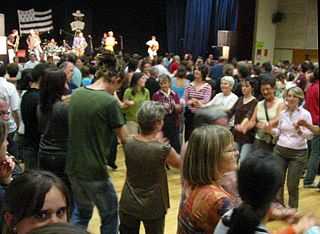
An dro or en dro is a Breton folk dance in 4
4. It is a form of a circle dance.
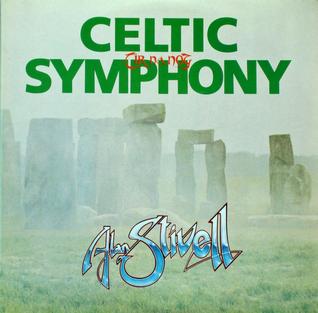
Symphonie Celtique, subtitled "Tir na nOg", a folk-rock album by Alan Stivell, originally released as a double LP in 1980 by CBS France, catalogue number CBS 88487. In 1987, it was published by Rounder Records in CD 11523. Digitally remastered and reissued on CD by Disques Dreyfus, catalogue number FDM 36196–2.

Renaissance de la Harpe Celtique or Renaissance of the Celtic Harp is a 1972 record album by the Breton master of the Celtic harp Alan Stivell that revolutionised the connection between traditional folk music, modern rock music and world music.
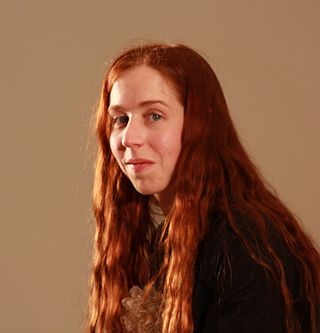
Cécile Corbel is a French and Breton singer, harpist, and composer. She has released five albums of original music and worked for Studio Ghibli as a composer for its 2010 film, The Borrower Arrietty. Corbel sings in many languages including French, Italian, Breton, and English and has done songs in Spanish, German, Japanese, Irish, and Turkish. Her lifelong partner is songwriter Simon Caby, who is also her co-composer.

Red Cardell is a French, Breton rock band, that mixes Breton music with rock, folk, blues, world music and chanson réaliste.

Pat O'May is a French musician who blends rock music with elements of world music. He originally worked with the heavy metal band Marienthal, and also produced several solo albums. He has written over 100 tracks for the TV show European coast seen from the sky. He participated in Alan Simon's rock operas Anne de Bretagne, Excalibur: The Celtic Rock Opera and started working with Martin Barre touring and recording with him.
Georges Cochevelou (1889–1974) was an interpreter, soldier and banker. He discovered and reconstructed the Celtic harp of the Middle Ages, and, along with his harpist son Alan Stivell, was responsible for its revival in Brittany in the 1950s.
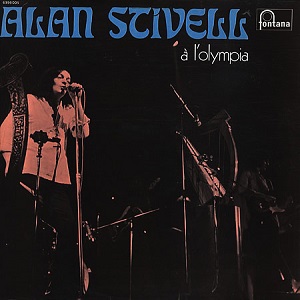
À l'Olympia was Stivell's first live album, recording at L'Olympia. It was released by Fontana in 1972.
Tri Martolod or Tri Martolod Yaouank, is a traditional Breton song which dates to the 18th century in Lower Brittany. It was made famous by the interpretation, the arrangement and the recordings made by the Breton harpist Alan Stivell, in the 1970s.
Suite Sud-Armoricaine is a bawdy Breton song in Breton, popularized by Alan Stivell in the 1970s. It is the only song in Breton ever to make the number one chart spot on French radio Europe 1. The lyrics are from the Pardon Speied date from 1950s and they are in the public domain because the author is unknown. The song is originally a traditional Breton musical air.
Pop-Plinn is a traditional air of a Breton dance transformed into pop music by Alan Stivell. The "Dañs Plinn" is a fast and physical dance where the dancer makes two small jumps by holding the arm of his neighbors.

Again is the Alan Stivell's seventeenth album released in 1993 under the Keltia III label by Disques Dreyfus and Sony Music in France. He registers again his greatest successes of the seventies with updated arrangements and help of prestigious guests : Kate Bush, Shane MacGowan from the Irish group The Pogues, the Senegal singer Doudou Ndiaye Rose, the French singers Laurent Voulzy and Breton singers Gilles Servat and Yann-Fañch Kemener.

AMzer – Seasons is the 24th album by Breton musician Alan Stivell, released on 2 October 2015 through WorldVillage in France and other countries. "NEw' AMzer" was the first single to be released from it. This track was also released as a promotional video.

Emerald is the 23rd album by Breton musician Alan Stivell, released in 2009. The album celebrates Stivell's 40-year career since 1970's Reflets (Reflections), his first album as a singer. It's a return to the roots, a return to the violin and to folk-rock, and both an ever innovative approach, playing on electric harp and bagpipes prototypes and in musical arrangements that are as eclectic as they are original.

Andrée Le Gouil, known by her stage name Andrea Ar Gouilh, is a French singer.
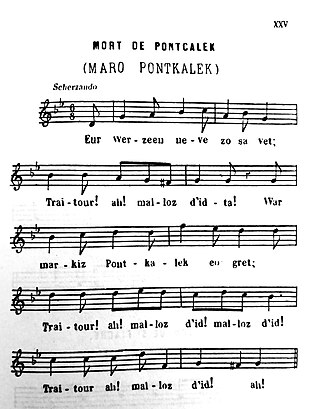
"Marv Pontkalleg" is a traditional gwerz, included as no. XLVI in Barzaz Breiz, a book of traditional Breton songs collected in Cornouaille, Brittany, in the 19th century by Théodore Hersart de la Villemarqué. The death of the Marquis de Pontcallec following a conspiracy against the kingdom of France, is an authentic historical incident recounted by Hersart De La Villemarqué in the Barzaz Breiz; this version praises the militant and valiant nobility of his country in opposition to the bourgeoisie. "Marv Pontkalleg" is one of the classics of Breton music, and has been recorded many times by, among others, Gilles Servat, Tri Yann, Alan Stivell, Andrea Ar Gouilh and Jacques Pellen.
























